Rotorway International Exec Helicopter Chief Pilot
I left Rotorway Helicopters aka RotorWay International (RWI) a little over five years ago to pursue other adventures including flying the “Big Iron” in the Gulf of Mexico, Grand Canyon and other locations.
I was with RWI almost five years as their Chief Pilot, but I did all kinds of other “jobs” too: Demonstration flight pilot, air show representative, mechanic, new ship builder and R & D fabricator to name a few.
I thought you might enjoy some of my “opinions” and “insight” regarding the company back then. This article will start with my roots and what I was doing before I joined the RWI team. I will discuss my observations of the companies philosophy, the machine itself and include some of the eye opening incidents I had.
RWI has been around for over 40 years now and there are countless individuals building and flying their products. As the result of my involvement with the company, many owner / pilots have become life long friends.
Before RWI: I already had my “Stuck Wing” rating from the mid 70’s. My father, a retired Air Force Colonel (WWII and Korean bomber and fighter pilot) helped me get started. However, I had this urge to fly a helicopter. Dad thought I was nuts. Daily, Huey’s and Cobra’s flew over my parent’s house to and from Fort Lewis Army base near Tacoma, Washington.
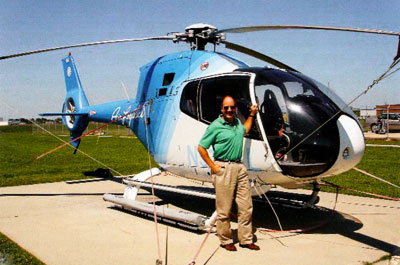
It was at Fort Lewis that I, as a military dependent, could and did join Fort Lewis’s flying club to get my Private fixed wing rating. And, while I was still in high school, back in the early 70’s, I built a Scorpion 2.
Unfortunately $$ ran out half way through the project and the unfinished ship was sold. I really had this helicopter thing in my blood that needed to be addressed…I just didn’t have the funds when only a teenager.
Several years later I was finally in the “financial” position to pursue at least a Private Add-On rating. I had been a civil engineer for almost 15 years in the Seattle area when I marched my butt down to a local flight school (Medium size Part 141 school).
I took the half hour demo flight and was hooked. However, this “instructor” scared me a bit while showing me some cool stuff in the R22.
I was not keen on some of his “High Ego” techniques.
You know that little voice in the back of your head that says, Run!!! So I went down the taxiway at Boeing Field to the com-petition (Small Part 61 school) and took a demo flight with them. Sooooo much better. Safer, safer, oh, did I say safer. I signed right up for instruction.
This would turn out to be a wise choice on my part. The instructor I had on that first demo flight died a couple of years latter. He carried an unsecured large piece of drift wood back from the beach.
When the drift wood shifted into the controls he augured his R22 into a local warehouse. Just one of many sad experiences that sticks with you forever. I went on to complete my Private Add-On, Commercial and initial CFI with this Part 61 flight school.
My instructor for all three of these was nominated for best Instructor several times. I was very lucky and thankful to have him teach me so, so much. Worth at least 100 times what I spent just because of his wealth of knowledge and ability to teach me good safe flying judgment and techniques.
These would all come back to help me immensely while with RWI. I did eventually leave my civil engineering job in 1999 and was hired by the other helicopter company at Boeing Field.
Their main incentive was my initial Instrument and CFI Instrument ratings at cost. The other flight school only had ratings through your initial CFI. Plus this larger school had turbine and other medium sized aircraft.
Rotorway Helicopters Company Philosophy: RWI has so much history I don’t have the space to write it here. Some have told me to write a book. Who knows, could be a best seller!!! When I came aboard in 2000 “Stretch” had just left/retired as President.
I met and talked with him several times when he would stop by on his Harley (I had one too so we could relate on both flying and bikes). Super guy and I wish I could have worked for him.
The “Management” when I was there was a Board of four guys from different departments. Two things got my attention right away. First was that the “Board” was an even number. I had served on several Boards during my career and they were all odd numbered to avoid a dead lock vote. So I saw this as strange.
Second was that not one of them was a pilot, not even a student or fixed wing. Stranger and stranger. A helicopter company run by non-pilots. I supposed it could work, but how well? Several months before I left, Rotorway Helicopters / RWI was in negotiations to sell to its current owner.
RWI was an ESOP (Employee Stock Ownership Plan) company, or employee owned. The employees voted to sell the company and the rest is history. It appears that the Talon is selling well and a certified two seat turbine appears in the possible future. I wish them the best success.
The Machine: I have to admit I was a bit concerned when I first started interviewing with RWI and I had a chance to examine their 162F. Coming out of certified ships to a kit helicopter was humbling to say the least.
To make the decision harder I had two other job offers. When I weighed all the pros and cons I based my decision mainly on the “Family” atmosphere at RWI, the fact that I would be Chief Pilot and finally the location: Phoenix, Arizona.
My wife is a Controller / Accountant and can land a job just about anywhere with her eyes closed. Helicopter jobs were out there but relocation was usually a must. Plus we both were ready to leave our hour plus commutes, the cold or snow and the rain or drizzle of Seattle behind too.
Having most of my 500 flight time hours in the R22 (150 or so in R44, B206, EC 120 and AS350) when I started at RWI was a plus. And I got my entire Private Add-On in an R22 that did NOT have a governor!!! Super big plus given the 162F does not have one either.
The few hours I had in Eurocopter products helped also with the clockwise rotation of the RotorWay. Once I earned my first helicopter license in 1993 I started learning all about the other ships, certified or kit, and kept basic track of all of them, including RotorWay.
So I was quite surprised to see nothing really had changed mechanically from my Rotorway Helicopters Scorpion 2 of the early 70’s to the ship I was going to “Interview fly” in mid 2000. Still had the water cooled engine mounted vertically, still had a chain and oil bath for main rotor drive and of course those three tail rotor drive belts.
I think the focus over the years was to keep the costs down using the current mechanical systems and spruce up the looks with the exterior shell. T believe the sleek appearance of the 162F was a main “close the deal” point of the ship.
This was quite evident after giving demonstration flights. Even though several potential customers could afford a R22 or CB300 they commented how ugly they were compared to the Rotorway Helicopters Exec. You’ve got to admit, the RW is a looker.
The “Incidents” I mentioned earlier included, as I recall: Six full down autos, about 20 hovering autos, two catastrophic tail rotor failures, and …man I forget and need to check my log book.
A few of these “incidents” are directly reflected in RWI’s mandatory and advisory notices. And a few are simply bad luck due to premature metal fatigue or poor design. Again I thank my first instructor that was gifted at teaching me so much.
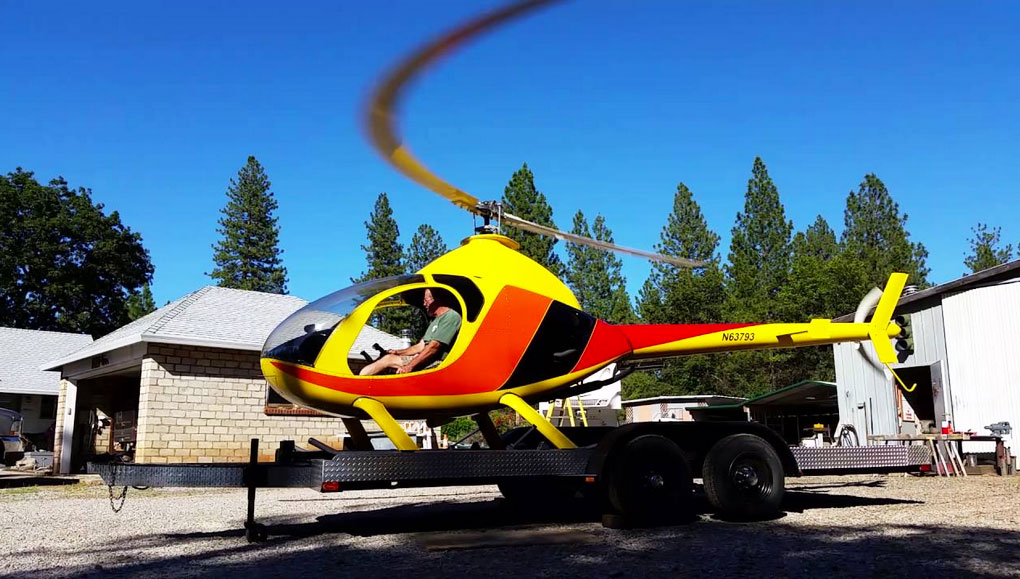
The secondary failure issue was well underway before I logged my first flight in a Rotorway Helicopters 162F. Sadly, I got bit twice with the old design. One occurred at altitude, resulting in a full down to pavement. and the other happened in a hover, requiring a hovering auto to pavement. This was a real sore topic at the time and disused openly outside the company.
In one incident, the petcock on top of the engine was spun open when a supercharger (ACIS) belt let go, flooding the ECUs and killing the engine at altitude — full down in the desert, Immediately, the advisory to safety wire the valve came out.
In another, the cup inside the upper engine pulley failed in a hover — hovering auto to gravel. This was because the ship had a re-used cup (unknown to me) from previous crash.
Then the chain broke in a hover — hovering auto to gravel. This was just bad luck, no advisory. I could go on with several others but let’s save those for hanger or camp fire flying.
The two needing mention are the catastrophic tail rotor failures. My first one was in the 162F and happened from about 75 feet on a real steep confined area approach with a Commercial helicopter pilot, transitioning into the RW.
We were well below ETL when, after a 45-degree left yaw, I had the controls and nothing left to do but a modified hovering auto. The ship spiraled three times, with no chance to regain airspeed.
That was a real hard landing on uneven terrain resulting in a roll over. The collective was in my armpit just before impact too. What a result; the Rotorway Helicopters ship destroyed and my back broken (T-12 compression fracture). The student was also injured but not as seriously.
And the Cause was? The Rotorway Helicopters tail rotor belts were miss-installed on the idler pulley. The ship made it to 208 hours (250 hr replacement) and there had been no formal pilot instruction on installation method. No sign of wear or slackness appeared during each pre-post flight either. An advisory followed to check installation.
My second was in a carbureted 162. We were just leaving downwind, heading to base with a Phase 2 student. Suddenly a loud bang sounded in back with an accompanying huge left yaw.
I took controls and entered an auto. I attempted to re-engage the engine to help make it to pavement. The ship had too much yaw without a spinning tail rotor to act as vertical fin. Thankfully, in this case, we had a perfect auto to level dirt.
Speed, flare, stop forward speed, level and pull full collective at end – right out of the manual. Piece of cake right? Whoa!!! Just as suddenly, the engine came back on line big time with full collective, yaw to ground and roll over.
What the @#$%. Luckily, both of us were fine, student had a small cut due to windscreen shatter. My training of roll off throttle completely to detent did that. RW had no detent so it was Pilot error – sort of.
If I had known about the no detent or no full off throttle when raised to full up, I would have reached up during the auto and killed the engine. And advisory followed changing cororlator cam. The real cause was that the secondary had not been inspected after a previous tail rotor strike (unknown to me) and the stub shaft failed.
Conclusion: Yea, I know some of you are saying “Bill, you should expect this because you’re a test pilot”. You’re so right. And you should all expect it too because you’re also test pilots with experimental aircraft. I was logging about 500 hours a year while at RWI. I’m not saying this to brag at all.
The fact is that this amount of flying exposes any kit helicopter pilot to more of that or saying. “It’s not IF something will happen but WHEN”. Why I’m here with you today and able to write this article is due in part, in my opinion, to one of those “good judgment” items my instructor taught me.
Never, never, never, whether flying solo, carrying passengers, giving dual, whatever, let your hands or feet wander too far from the controls. Regarding certified ships, at least from my experience, nothing breaks, ever. But this has never changed how I pre-flight, fly, or monitor the controls at all.
I attended Homer’s one year and was inundated with Rotorway Helicopters secondary shaft questions. The cool part was that everyone there was so excited to see someone show up from RWI. I had to tell them I did this on my own because I just love helicopters so much. Unfortunately, I got in trouble from “management” for attending, go figure.
Thankfully, the new 35mm came out and the problem appeared to be solved. I really appreciate the new RWI for sending company representatives to Homer’s, finally. Ever heard that other saying? “There are bold pilots and there are old pilots, but there no old bold pilots”. I think it’s true.
Complacency can sneak up on any builder / pilot, new or seasoned. Recommendations? Take the extra time to build your ship right, have it inspected by someone very familiar with Rotorway Helicopters, question every part during pre-flight and finally get good instruction. These are just some things to think about.
Hope your enjoyed the article. Fly smart and safe my friends.


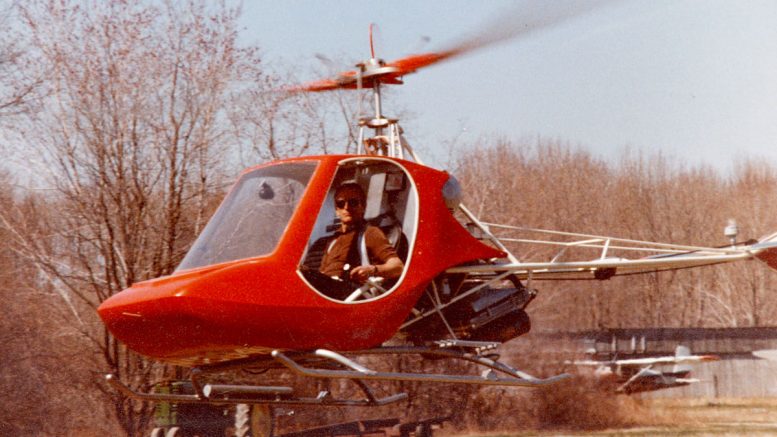
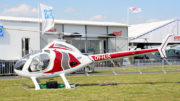
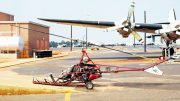
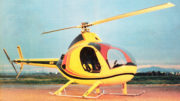
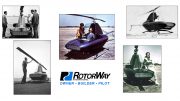
Be the first to comment on "Life At Rotorway Helicopters"